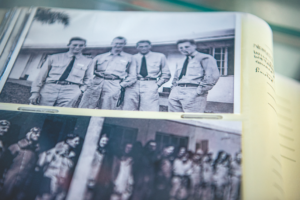TAKING OFF: Airglades Airport in Hendry County sets sights on international trade.
From the air, the contrast between South Florida’s coasts and its interior is pretty striking. The sprawl of housing developments and tangle of roads give way to the lush greens of farmland or wilderness of Florida’s Heartland, the rural six-county region that’s known for its agricultural production. From the air, it might be difficult to spot the small runway in Hendry County amid the sugar cane fields, but soon enough, Airglades Airport might give ample reason for those aircraft to land in what’s also sometimes derisively called Florida’s flyover country.
For more than a decade, the team behind Airglades Airport has been trying to establish it as a link in the supply chain between Latin America and the United States. South Florida, in particular Miami International Airport, is the top hub in the U.S. for receiving flowers, seafood, produce and other perishables internationally. Airglades is trying to pick up some of that trade. In the process, it could bring about 1,400 much-needed jobs to the county and become a business force regionally. Plus, this $650 million project could come together in a way that’s never been done before: An airport fueled by private capital. If all goes to plan, within two years, those first cargo planes will touch down at Airglades. That seems like a way off, but considering the process made so far, it’s a finish line that’s well within reach.
The airport was born as Riddle Field in 1942 as part of the Lend-Lease Act, allowing for the formation of six flight training schools for British soldiers on U.S. soil. More than 1,300 cadets in the Royal Air Force trained at the airstrip before returning to the European theater. When the war ended, the airfield was decommissioned as a military site and the land eventually fell under the jurisdiction of Hendry County. It’s served as the home of a flight training school and skydiving company and plenty of crop-dusting operations. Planes buzzed in and out, but it was hardly a major revenue source or jobs creator.

HIGH-FLYING HISTORY: In the early 1940s, cadets in the British Royal Air Force trained at the airstrip in Clewiston.
In 2007, an airport consultant named Fred Ford came across the small airport with plenty of open fields around it. Ford, a former Dallas-Fort Worth airport general manager with 50 years of experience in the industry, had been doing some research in South Florida for a client when he saw the opportunity Airglades presented. Just an hour southeast, Miami International was one of the top airports in the country when it came to receiving freight and cargo from overseas. But it was landlocked, with a congested highway system connecting it to the rest of the country. Airglades was the opposite. It was a blank slate.
The open fields meant that it had plenty of room to grow, and its location right off routes 80 and 27 meant trucks had a short trip to major highways.
It was also a business opportunity. In 1997, the FAA introduced the Airport Investment Privatization Program (now the Airport Investment Partnership Program), which allows private capital to invest in airports. The program had been rarely used, and as of now, only two other airports are participating—Stewart Airport in New York and Luiz Munoz International Airport in Puerto Rico—but in 2010, Ford approached Hendry County officials about forming an investment team that would buy the airport. The commissioners proved to be receptive to an idea that could bring in jobs and a new tax base to the county. He also formed the investor group Florida Cargo Fresh. A couple of years later, another major investor came on board called Sugar-Hill, comprised of Hendry’s two largest landholders: U.S. Sugar Corporation and Hilliard Brothers of Florida. Together they formed Airglades International Airport LLC. Ford is no longer involved in day-to-day operations but remains a shareholder and a board member.
But airports take time. And this was certainly an ambitious project. The last decade has been a process of finding investors, seeking buy-in from potential clients and getting various approvals from the FAA and various other governmental agencies. The scope of the project has grown to about $650 million, which would include almost doubling the size of the existing runway to 10,000 feet, building an air cargo distribution center that would also house inspection services and constructing an air traffic control facility, among other site improvements.
In March of 2020, ground broke on a U.S. Customs & Border Protection facility. So while not much has physically changed on-site, there’s been plenty of work happening behind the scenes, says airport manager Lillie Rodriguez. “We’re like a duck floating on a pond with its feet going a million miles per hour underwater,” she says.
The pandemic has put most progress on hold, she said. Construction has slowed. Importers have been reluctant to continue discussions while they’re focusing just on how to survive. Rodriguez said there are potentially a dozen other investors lined up, but even that process has been slowed. Initially, the airport planned to have all of its investors signed by October to meet an FAA deadline, but the deadline was extended to July 2021. If that deadline is met, the airport would be on pace to begin operations sometime in 2023, Rodriguez said.
Of course, all of this won’t matter unless the cargo comes. Miami International handles about 2.35 million tons of cargo per year, a number that’s expected to almost double by 2040. It also handles about 79% of all imports from Latin America into the United States. Perishable products play a large role in that, including so-called cold chain products like fish and produce that must be refrigerated during their journey. Take flowers, for example. About 70% of fresh-cut flowers sold in the U.S. are imported from Columbia or Ecuador or another Latin American country. Due to the short shelf life, flowers are picked, processed and shipped in refrigerated containers that arrive stateside—mostly via Miami—all within a day, where they pass through customs and make their way throughout the country.
So, in a business in which timing is everything, Airglades pitches itself as an alternative that saves time. Its size means taxi time is reduced compared to Miami—up to 60%, according to an Airglades study—and a centralized processing center can reduce the amount of time the product is sitting on trucks, not to mention sitting in traffic on Miami’s highways. Overall, Airglades boasts it can add days of shelf life on to a product if all goes smoothly. As part of its final application to the FAA, it included more than a dozen letters from shippers, vendors and others relating support for the project. “It is our opinion,” a representative from Miami-based Nature’s Flowers wrote, “there would be many in the business of processing and transporting perishable products in the Miami area that would be ready to establish operations there.” Airport officials expect to also handle exports through the facility, but it would be a smaller percentage compared to their import business. They’ve written off any potential for passenger flights.

SKY’S THE LIMIT: Airglades Manager Lillie B. Rodriguez says the airport is going to be a game changer.
Rodriguez says airport officials have had several “cordial conversations” with Miami International leadership, but Miami has publicly maintained that it sees no use for the Hendry site and that it can handle growth in its cargo volume perfectly well. In fact, Miami-Dade airport system is slated to receive $5 billion in improvements, including expanded cargo capacity. Yes, there is some competition here, but Airglades is betting that they can get enough to be more than sustainable. “What’s bread crumbs to Miami are loaves to us,” Rodriguez says.
Once the investors are all lined up, the sale of the 3,000 acres of airport property from the county to the private group of investors can happen. An agreement is already in place: On its face it looks like a sweetheart deal. The price tag is $13 million, but that gets reduced by $1 million for each 100 projected jobs added. The lowest it could possibly go is $5 million. And with the 1,400 projected jobs to be added directly from airport operations, that could bring it down to its lowest price. But the county is betting that it’s worth it in the long run, given the job creation and the potential tax base.
Hendry consistently has one of the highest levels of unemployment in the state; as of September 2020, it was about 7.5%, compared to Florida’s 6.5% overall. The county’s top employers are also almost all related to the agricultural industry. U.S. Sugar employs about 2,000, making it the largest private employer. Airglades would bring much-needed diversification to the local economy, said Keitha Daniels, director of the Hendry County Economic Development Council.
Airglades is an opportunity for a new era in Hendry, Daniels said. It’s not just the airport itself, but the warehousing, distribution and other related business it could bring to the county or Southwest Florida region. She estimates that the airport could bring in another 1,700 of those ancillary jobs. Of course, those new employees would need places to live, which could lead to housing developments and other amenities cropping up nearby. “We haven’t seen anything like this in recent history,” she says.
All parties are optimistic, but the issue still stands: This hasn’t quite been done before. A private airport handling cargo almost exclusively is an unknown quantity in the United States. Rodriguez and other officials point to the idea’s success in other countries, but it’s another hurdle that makes attracting clients all the trickier. “We’re writing the textbook as we go along,” Rodriguez says. “But when we’re done, we’re going to be a game-changer.”





